Key takeaways:
- Gender equality advocacy aims to dismantle systemic barriers affecting all genders, emphasizing the importance of inclusivity and understanding diverse experiences.
- Effective public speaking requires clarity, engagement, and confident body language to foster genuine connections with the audience.
- Overcoming public speaking anxiety involves shifting focus to the message, preparation, and positive self-talk, which can transform fear into determination.
- Crafting a personal narrative and engaging the audience with relatable stories can deepen connections, making advocacy efforts more impactful.
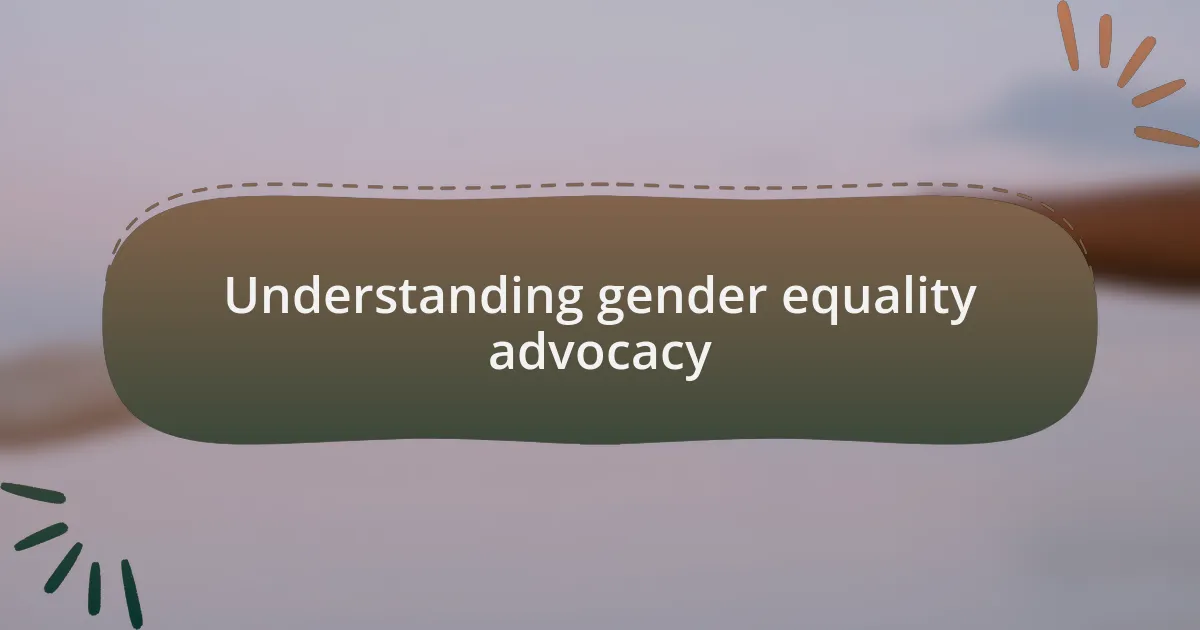
Understanding gender equality advocacy
Gender equality advocacy is not just about achieving fairness for women; it’s a movement that seeks to dismantle systemic barriers impacting all genders. I remember a moment during a community workshop when a young man shared how he felt constrained by societal expectations of masculinity. His words struck me—are we, too, often sidelining men in these discussions?
Through my journey in advocacy, I’ve come to realize that understanding gender equality involves recognizing the interconnectedness of our experiences. I once attended a panel where diverse voices shared stories about discrimination, and each narrative illuminated different facets of inequality. It made me wonder: how can we amplify those voices while fostering inclusivity for everyone?
When I advocate for gender equality, I often reflect on the personal relationships that have shaped my views. A friend once confided her struggles with workplace discrimination, which forced me to examine my own privilege. This realization drives home the point that gender equality advocacy is a collective effort, encouraging empathy and support across all genders and backgrounds.

Importance of public speaking
Public speaking is a crucial skill that empowers individuals to advocate for change, especially in areas like gender equality. I still remember my first time addressing a local group about the importance of inclusivity. My heart raced, but as I spoke, I felt the energy in the room shift. It was a reminder of how powerful our voices can be when we share our stories.
In my experience, effective public speaking isn’t just about delivering a message; it’s about connecting with your audience on an emotional level. I recall a moment during a workshop when I shared my journey facing gender biases. The audience’s response was overwhelming—they shared their own experiences, creating an atmosphere of trust and solidarity. Isn’t that what we seek in advocacy? A genuine connection that transcends individual stories to ignite collective action?
Moreover, public speaking enhances our ability to influence perceptions and drive significant conversations. When I participated in a debate on workplace equality, I saw firsthand how articulating ideas clearly could spark a shift in mindset. It made me ponder: how can we use these platforms to challenge norms and inspire others? The answer is simple—by embracing public speaking, we become catalysts for change.
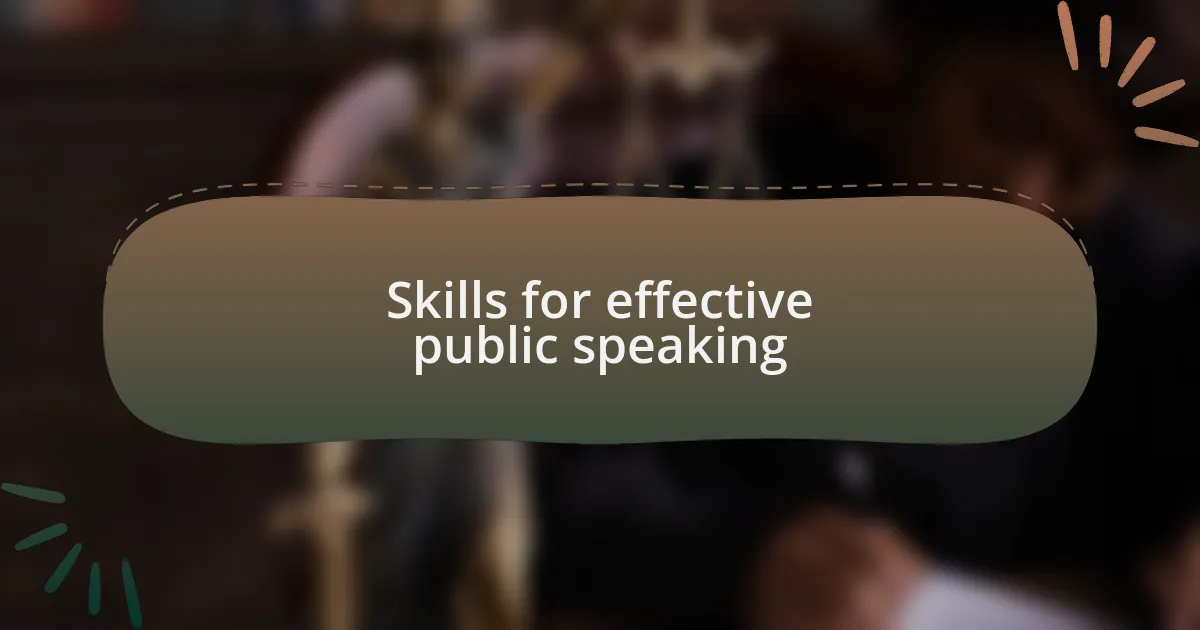
Skills for effective public speaking
One of the most essential skills for effective public speaking is clarity. I remember when I stood before an audience, armed with a profound message on gender equality, but my nerves turned my words into a muddled jumble. By practicing the art of simplifying complex ideas into relatable stories, I learned that clarity not only captures attention but also drives home the message. Have you ever felt lost in a speech? I know I have, and that’s why I now prioritize structuring my thoughts in a coherent flow.
Engagement is another key aspect that can make or break a presentation. During a community event, I used interactive techniques, like asking questions, which transformed the audience from passive listeners to active participants. I noticed how the room filled with energy as people delved into discussions, sparked by my inquiries. It made me realize that when we invite dialogue, we not only share our perspectives, but we also validate others’ voices—an essential component in advocating for gender equality.
Lastly, body language plays a pivotal role in conveying confidence. There was a time when I spoke with crossed arms, unconsciously projecting insecurity. It wasn’t until a mentor pointed this out that I understood the power of open gestures and eye contact. Even small changes in posture can create a sense of trust and authority. Think about your own experiences—how does your body language reflect your message? I’ve found that a confident presence enhances not just the delivery, but also the impact of our advocacy efforts.
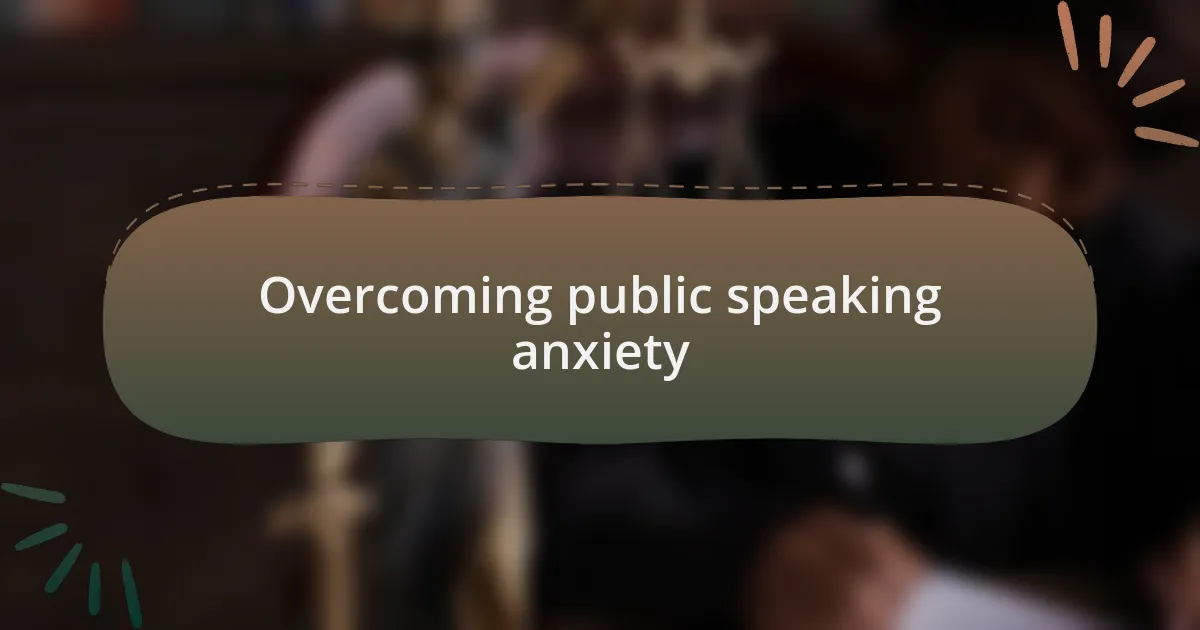
Overcoming public speaking anxiety
Public speaking anxiety can be a formidable barrier, but overcoming it is possible. I still remember the first time I stood in front of a crowd, heart racing and thoughts swirling. In that moment, I realized that my anxiety stemmed from an overwhelming fear of judgment. To combat this, I learned to shift my focus from what others might think to the importance of my message. Have you ever considered that the audience is more supportive than we often perceive? I’ve found that embracing vulnerability helps transform anxiety into authenticity.
Preparation has been my greatest ally in overcoming anxiety. I recall spending hours rehearsing my speech, but the real breakthrough came when I started visualizing my success. Imagining myself confidently sharing my ideas made a significant difference. Have you ever tried visualizing a successful outcome before a big presentation? When I picture myself connecting with the audience, I feel a sense of calm wash over me.
Another technique that has served me well is positive self-talk. During an event focused on gender equality, I found myself doubting my capabilities just moments before stepping on stage. Instead of succumbing to those thoughts, I reminded myself of the passion that fueled my advocacy. How do you talk to yourself in moments of doubt? By replacing negative thoughts with affirmations about my expertise and purpose, I turned anxiety into determination, ready to make my voice heard.
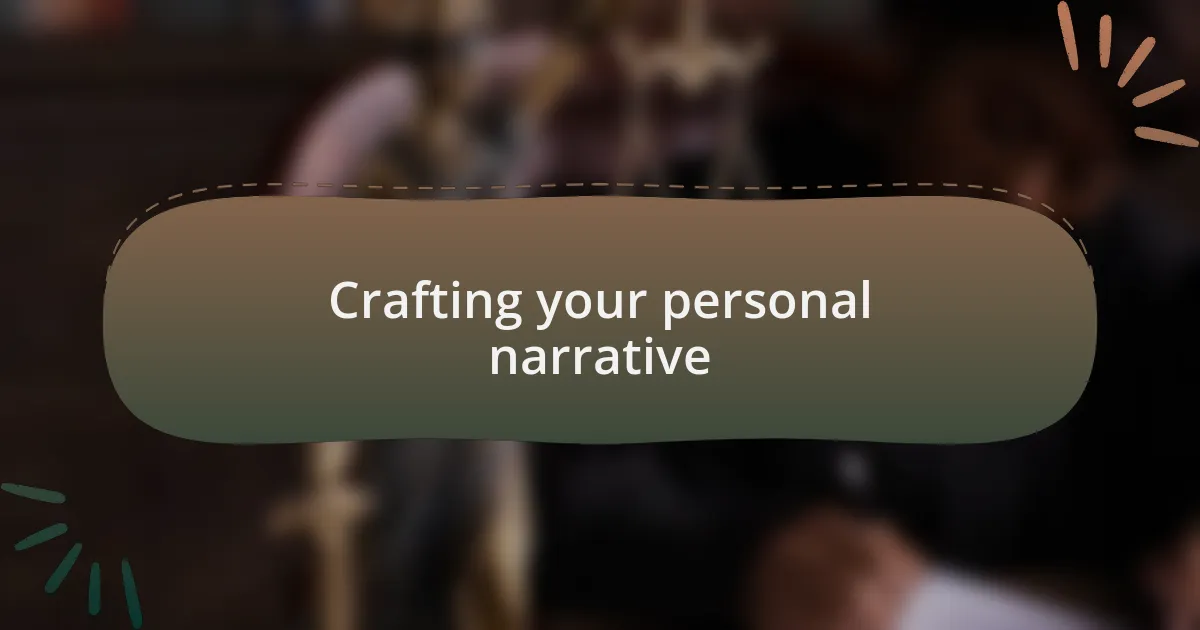
Crafting your personal narrative
Crafting your personal narrative is a deeply personal journey. I remember when I decided to weave my experiences into a story that resonated with my audience. Reflecting on my life led me to realize that every achievement and setback added depth to my message. Have you thought about what moments in your life shape your advocacy? When I began sharing these moments, I noticed the audience was not just listening; they were connecting.
While writing my narrative, I often focused on the emotions tied to my experiences. I can still recall the mix of anger and hope after an encounter with gender discrimination. Capturing these feelings helped convey my passion authentically. What emotions drive your advocacy? Sharing them not only humanizes your narrative but also engages others in a relatable way. By being open about my struggles and triumphs, I turned my story into a source of inspiration.
Lastly, I learned that our stories must evolve with us. After realizing how much I grew during my advocacy journey, I felt compelled to update my narrative regularly. Have you revisited your story lately? I found that each public speaking opportunity was another chance to refine my message, making it richer and more impactful. Embracing this fluidity allowed my narrative to resonate with more people, fostering a sense of unity in the fight for gender equality.
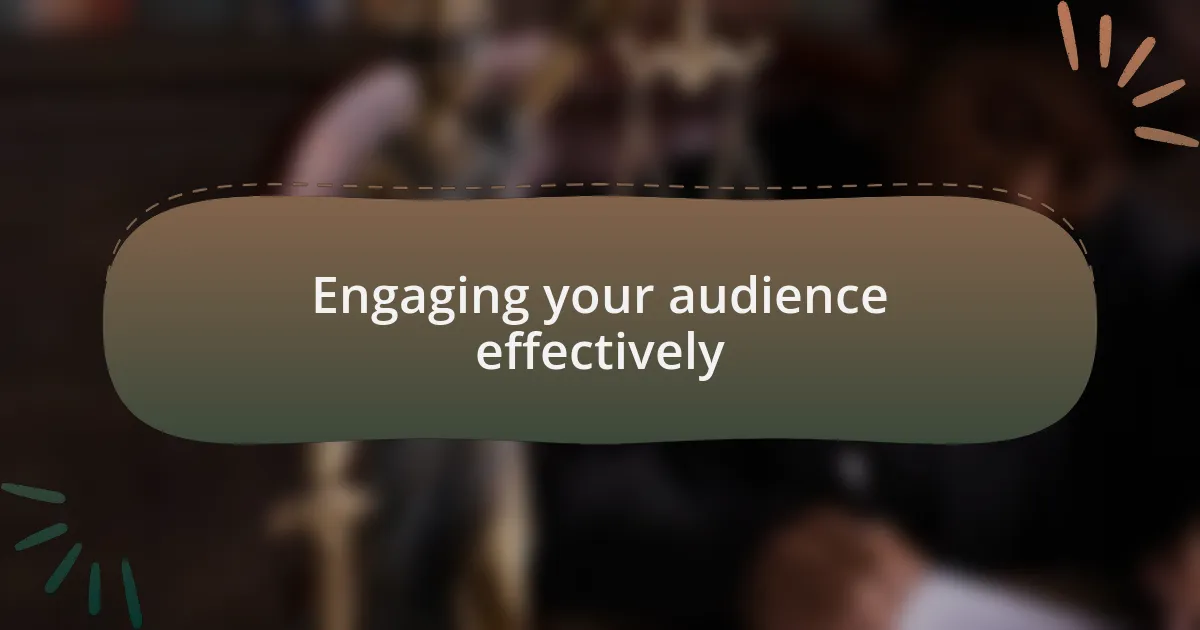
Engaging your audience effectively
Engaging your audience effectively requires more than just sharing facts; it’s about forging a connection. I recall a time when I observed a room filled with people who seemed distant. Instead of launching straight into my topic, I decided to ask a question that sparked their curiosity, something like, “What does gender equality mean to you on a personal level?” The shift in energy was palpable. Suddenly, their eyes lit up, and they leaned in, eager to participate.
Another strategy I’ve found impactful is incorporating relatable anecdotes during my speeches. I once shared a story about a friend’s experience with workplace bias that left the audience nodding in understanding. These common experiences can bridge the gap between speaker and listener, reminding everyone that they are part of a shared struggle. Have you thought about the stories you can tell to touch on the heart of your audience’s experiences?
I also pay careful attention to body language—both mine and the audience’s. One particular event taught me that if you’re animated and passionate, it invites others to join in on that energy. During one of my talks, I noticed a few skeptical faces at first. But as I walked around the room, maintaining eye contact, I gradually saw them soften and even smile. This interaction became a powerful reminder: the way we present ourselves can draw people in or push them away. How do you engage with your audience non-verbally?
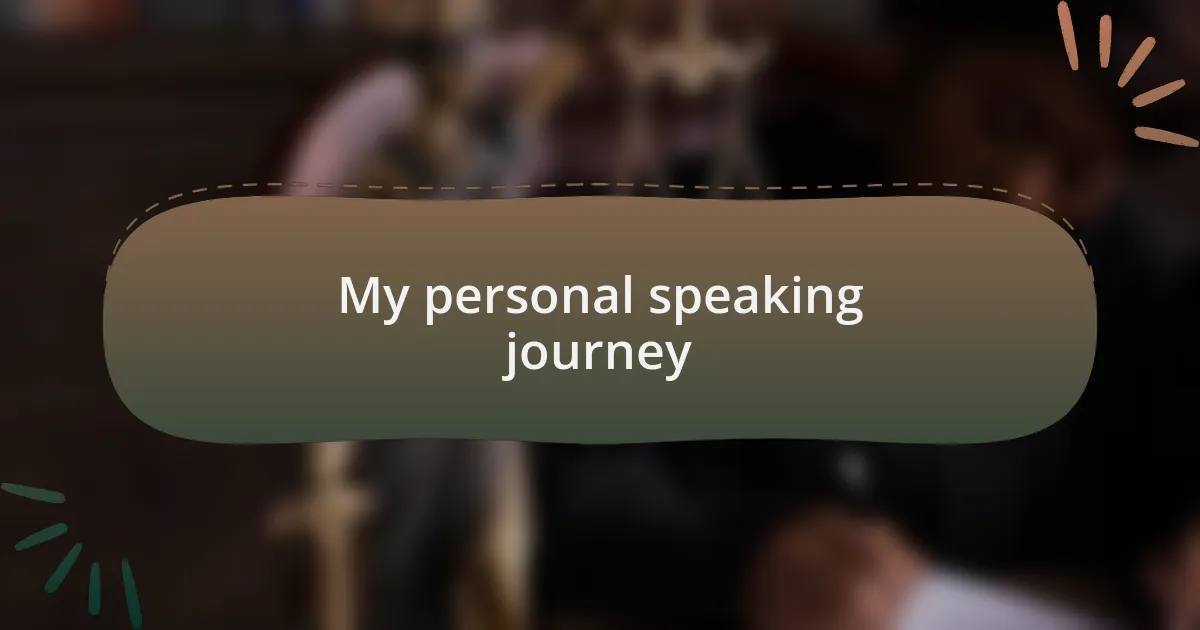
My personal speaking journey
My first experience with public speaking was a whirlwind of nerves and excitement. I still remember standing in front of my peers, heart racing, as I shared my thoughts on gender equality. The fear of judgment was overwhelming, and I wondered, “Will they even listen to me?” But as I spoke, I felt a sense of liberation. The moment I saw nods of agreement from the audience, it ignited a passion within me that has only grown since then.
As I continued to seek opportunities to present, I learned the importance of authenticity. I vividly recall a speech where I shared my own struggles with self-doubt and the societal pressures around me. The audience responded with empathy, and their supportive reactions made me realize that vulnerability can be a powerful tool. How often do we hold back because we fear being judged? It’s in those moments of honesty that genuine connections are forged.
Looking back, each speaking engagement feels like a stepping stone. There was one particular event where I had the chance to facilitate a workshop for young women. I felt a deep responsibility to empower them, and it made all the difference. Standing there, witnessing their growth and enthusiasm, I thought, “This is why I speak.” The realization that sharing my experiences could fuel others’ journeys felt transformative, reaffirming my commitment to advocacy through public speaking.